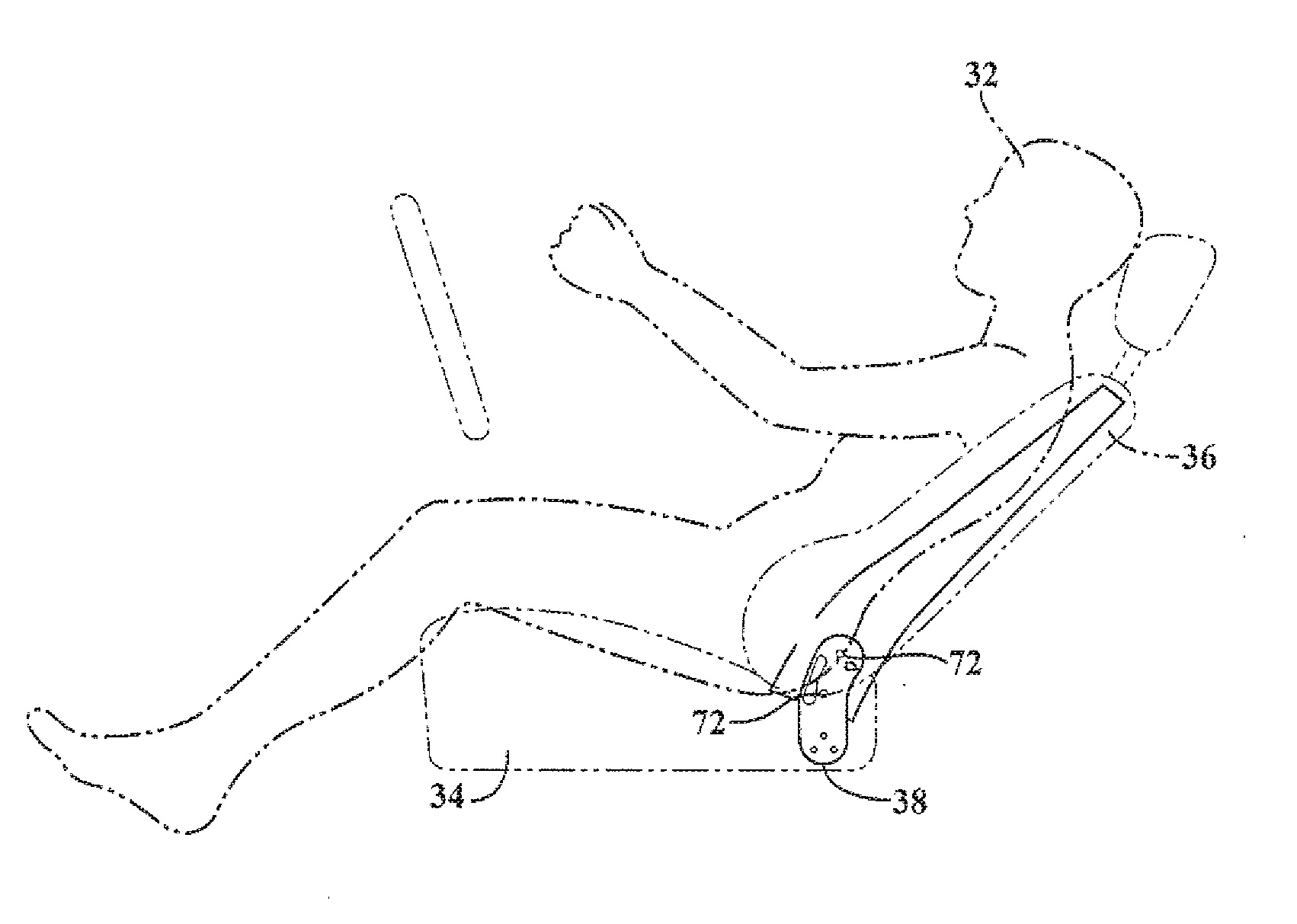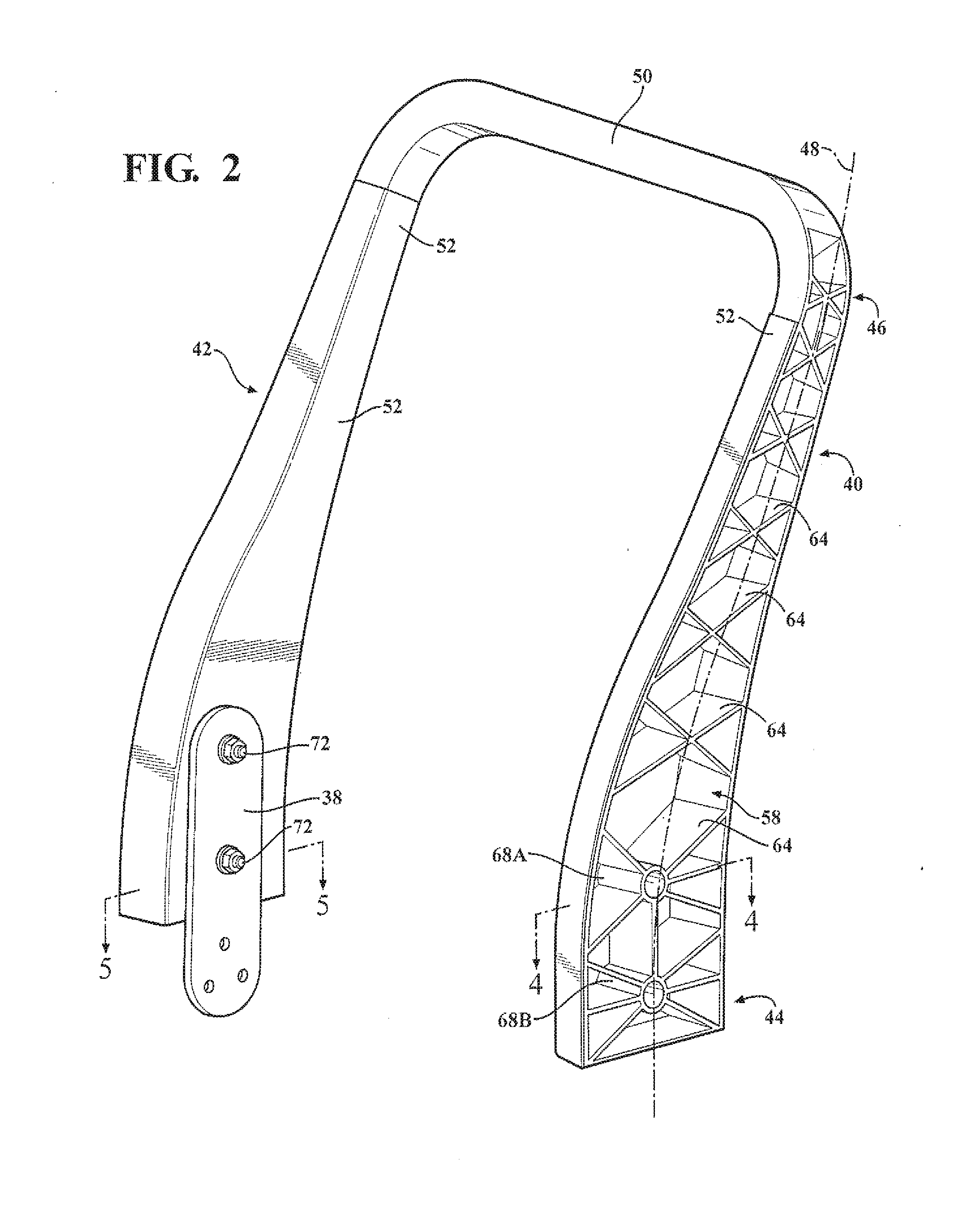Energy Absorbing Bracket For A Seat Of A Vehicle
a technology for vehicle seats and brackets, which is applied in the direction of vehicle components, pedestrian/occupant safety arrangements, vehicle arrangements, etc., can solve the problems of increasing the cost of seat backs and the requirement that the backs made of polymeric materials meet the structural requirements
- Summary
- Abstract
- Description
- Claims
- Application Information
AI Technical Summary
Benefits of technology
Problems solved by technology
Method used
Image
Examples
Embodiment Construction
[0021]Referring to the Figures, wherein like numeral indicate like or corresponding parts throughout the several views, a seat 30 for a vehicle is generally shown. The seat 30 is coupled to the vehicle for supporting an occupant 32 in a standard position within the vehicle. With reference to FIG. 1, the seat 30 includes a seating frame member 34 extending generally horizontally and a back frame member 36 coupled to and extending away from the seating frame member 34.
[0022]The back frame member 36 generally extends vertically away from the seating frame member 34. The back frame member 36 may include a first side member 40 and a second side member 42 each extending generally upwardly from the seating frame member 34. The side members 40, 42 each have a proximal end 44 proximate the seating frame member 34 and a distal end 46 spaced from the seating frame member 34. With reference to FIG. 2, each of the side members 40, 42 define a side member axis 48 extending from the proximal end 4...
PUM
 Login to View More
Login to View More Abstract
Description
Claims
Application Information
 Login to View More
Login to View More - R&D
- Intellectual Property
- Life Sciences
- Materials
- Tech Scout
- Unparalleled Data Quality
- Higher Quality Content
- 60% Fewer Hallucinations
Browse by: Latest US Patents, China's latest patents, Technical Efficacy Thesaurus, Application Domain, Technology Topic, Popular Technical Reports.
© 2025 PatSnap. All rights reserved.Legal|Privacy policy|Modern Slavery Act Transparency Statement|Sitemap|About US| Contact US: help@patsnap.com



